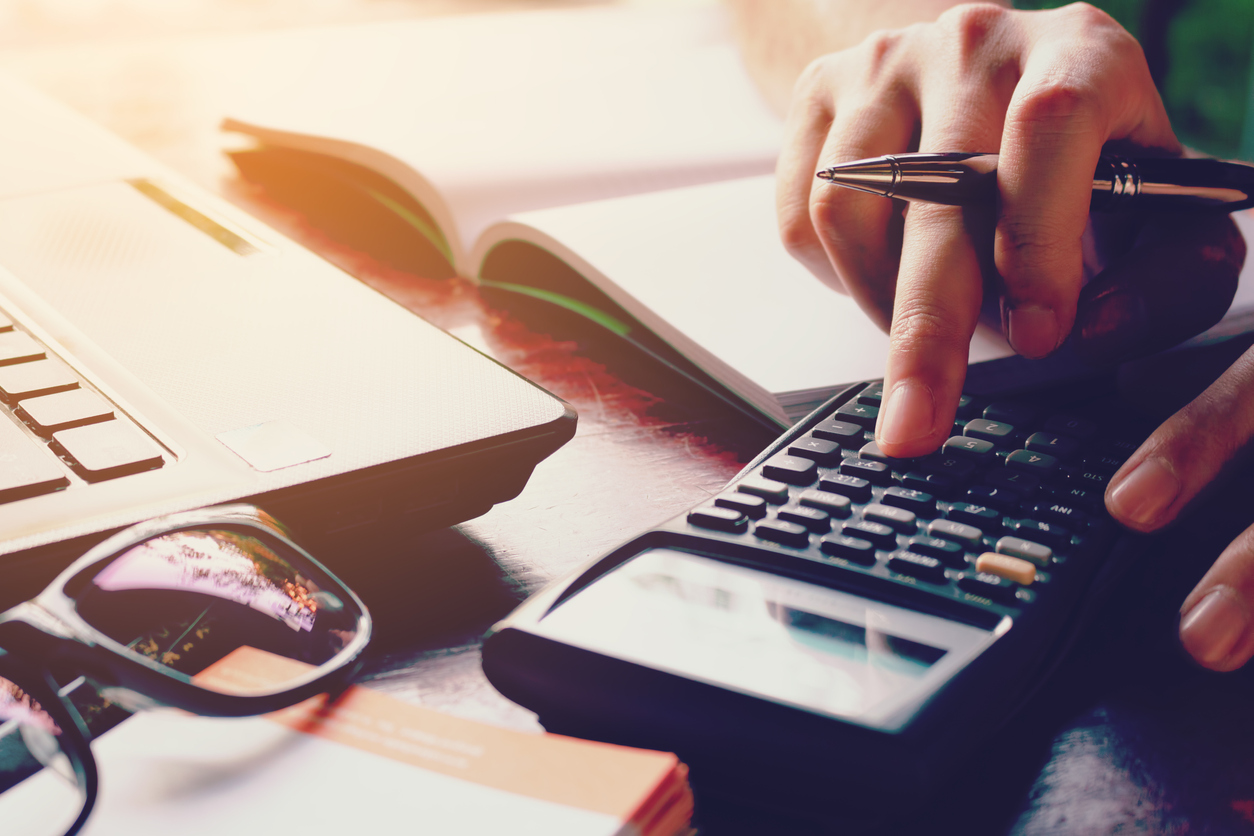The end of your financial year, 31 March, can be a rewarding and insightful time for self-employed people. If you’ve planned ahead and kept on top of things, for you it will be about putting the finishing touches on a job well done…..but the deadlines don’t move though, so if you’ve let other work pressures take priority during the year, the end of the financial year can turn into a busy and stressful time.
Let’s get you started on identifying what’s required and when, for efficient end-of-year accounting. It will help you to put a tax and accounting project plan together – this way you can simply fine tune it from one year to the next. You can assign all the tasks to yourself, use accounting software to do the donkey work, or if you prefer, pay an accountant to provide advice and pull it all together for you. Which option you take usually depends on how complex your business and tax situation is, and whether your time is more profitably spent on other things.
How does time spent on accounting help self-employed people?
Apart from meeting your legal tax obligations, accurate accounting can ensure you don’t pay more tax than you need to. It also helps you to avoid paying penalties for missed or late payments. Also, it can help you to take full advantage of government contributions to things like KiwiSaver. And finally, keeping track of income and expenditure as you go, will provide you with valuable insights into your business cash flow, how your business is changing and potential opportunities for growth.
Why should freelancers and contractors record their expenses?
When you pay for something that’s used to earn taxable income, it’s known as a work-related expense. It’s important to keep track of these for two reasons.
- The amount you paid can be deducted from your income reducing tax you have to pay.
- If you’re registered for GST, you can claim back the GST component of the expense.
What records do you need to keep when claiming expenses?
If you have a separate bank account for your business, and use it for all purchases and payments, you’ll always have an accurate and up-to-date record of your expenses.
Your online bank records can be manually downloaded into a spreadsheet or automatically sent each day to your accounting software through an authorised bank feed. From there you can reconcile each transaction to an expense category, such as tools and equipment, advertising, heat, light, power, vehicle expenses, printing and stationery, and so on. This helps you track monthly and annual variations from past averages. It also helps your future budgeting and cash flow forecasting.
In addition to payment records, such as your bank statements, you need to get receipts or invoices for business expenses you claim. These have to be kept for seven years in case Inland Revenue chooses to audit your tax returns. Filing invoices and receipts as you go saves a massive job at the end of the year. Putting small receipts into an envelope dated for each month helps to prevent them getting lost and makes finding them much easier, based on the date in your bank records. Some online accounting services make it easy to upload scans or images of your receipts, so they can be stored in the cloud until no longer required.
If you’re registered for GST and want to claim the GST on purchases, you’ll need to keep GST receipts for all expenses over $50. If you’re self-employed and earn more than $60,000 a year, you have to register for GST. That means adding GST to your invoices or sales prices and paying it to Inland Revenue. Read our guide to GST.
What expenses can a contractor or freelancer claim for tax purposes?
As mentioned above, you can claim pretty much any expense that’s related to earning your taxable income. But some expenses need slightly different treatment. Here are a few examples:
Assets: If you buy something for your business that you intend to keep for more than a year, it’s known as an asset. They typically cost more than $500. Common examples include computers, machinery and vehicles. These lose value each year, which is known as depreciation. There are widely used annual depreciation rates (percentages) for most types of assets. Instead of claiming the full purchase price in the first year, you claim the drop in value every year. The Inland Revenue website has a handy depreciation rate finder and calculator.
Home office expenses: If you use part of your family home for work, you can claim some of your household expenses. These include insurance, power, mortgage interest and council rates. The percentage you can claim is based on the floor area of the space you use compared to the total floor area of your home. If the area is also used for personal reasons, then you should estimate the percentage of time it’s used for business vs personal and adjust your claim accordingly.
Vehicle expenses: If your vehicle is only used for business purposes, you can claim the full operating costs – fuel, maintenance, licensing, insurance and parking. However, if you also use it for personal reasons there are rules around how much you can claim. Driving between home and a regular workplace is personal travel, for example. The Inland Revenue website has more on claiming vehicle expenses.
Entertainment expenses: If you want to claim expenses for things like meals while working away from home, or for costs associated with entertaining potential new customers, be sure to check the rules. Some costs can be fully claimed; others only 50%. Entertaining employees may be fully claimable, but subject to fringe benefit tax. Check the Inland Revenue site for more on claiming entertainment expenses.
What is provisional tax and who has to pay it?
If you earn income as a contractor or freelancer and your end-of-year tax to pay was more than $5,000, then you have to start paying provisional tax during the following year. The limit was increased from $2,500 to help reduce tax compliance costs for small businesses during the Covid-19 pandemic.
Provisional tax usually means estimating the tax you’ll need to pay for the year ahead and paying it in installments during the year, rather than all at the end. Read our guide to provisional tax for small business.
How do you claim expenses?
Most self-employed contractors and freelancers file an annual tax return using their myIR online account or by using an IR3 paper form. This tells Inland Revenue:
- How much income you have earned from all sources, including any wages or salaried work.
- How much income tax you have already paid, if any, (perhaps through schedular payments or PAYE when contracting or working for another company).
- The business expenses you are claiming.
- Whether your calculation results in tax to pay or a refund, and how much.
You may need to provide additional information, (using other forms), depending on your circumstances. Apart from IR3 variations for rental and farming income, and for non-resident tax payers, the main examples include:
- IR10 – if you’re claiming a significant number of expenses; it’s a financial summary that can be used instead of annual financial statements for a business.
- IR4 – if you have a registered business, (a company).
What are the main income tax dates to plan for?
Assuming the end of your financial year is 31 March, like it is for most people, here’s a summary of the main tax dates to help you plan ahead.
IR3 income tax dates
In early April your myIR account, (if you have one), will be open for you to file your return. If you don’t have a myIR account, Inland Revenue will send you a paper IR3 form, then…
If you don’t have a tax agent, (accountant):
- 7 July – you must file your IR3 return by this date; Inland Revenue will then send you a notice of assessment.
- 7 February (the following year) – if you have IR3 tax to pay, Inland Revenue must receive it before this date.
If you do have a tax agent:
- 31 March (the following year) – your IR3 return must be filed by this date.
- 7 April – Ii you have IR3 tax to pay, Inland Revenue must receive it before this date.
GST dates
GST returns and payments to Inland Revenue for each taxable period are due on the same date. Your GST taxable period (and filing frequency) can be one, two or six months.
For example, if you pay GST every two months, your first taxable period for each financial year would end two months after 31 March, which is 31 May.
GST returns and payments are due on the 28th of the month after the end of each taxable period. Using the above example, the return and payment for the first period, ending 31 May, would be 28 June.
There are two exceptions, which leave a bit more time to file and pay over the summer break and at the busy end-of-financial year period. So the GST return and payment for:
- Most taxable periods is due by the 28th of the following month.
- The period ending 30 November is due by 15 January, (not 28 December).
- The final period , ending 31 March, is due by 7 May, (not 28 April).
Provisional tax dates
If you use the standard or estimation option your payment due dates are:
- 28 August – first instalment, (in advance).
- 15 January – second instalment, (in advance).
- 7 May – third instalment, (after 31 March end-of-year tax calculations).
Visit the Inland Revenue website to see provisional tax dates for other options.
Be careful in your first year of paying provisional tax
When you first start paying provisional tax, be sure to plan ahead for the overlap in paying the previous financial year’s income tax and making the provisional tax payments. Or else things could get tight.
For example, if you have a tax agent:
- Normal IR3 income tax for the year ending 31 March 2022 would be due by 7 April 2023.
- Final instalment of provisional tax for the year ending 31 March 2023 would be due by 7 May 2023.
- You would also have to make the other provisional tax payments during the year leading up to 7 May 2023.
If you don’t have a tax agent, in the above example your IR3 income tax would be due 7 February 2023, which closely follows the second provisional tax instalment you probably paid on 15 January.
Student loan repayments for contractors and freelancers
If you’re self-employed or earn any income that’s not salary or wages, you may have to make your own student loan repayments. Be sure to check this out and add any due dates to your planning calendar. The Inland Revenue website has more on repaying a student loan when you’re self-employed.
KiwiSaver for self-employed contractors and freelancers
When you’re self-employed and focused on growing your business, it can be easy to forget about investing in yourself. As a contractor or freelancer, KiwiSaver is not compulsory for you and employer contributions don’t apply, but it’s still worth careful consideration.
What many people don’t realise is you can still get contributions from the government. Yes, free money from the taxpayer! It’s another way to get some of your tax back, albeit indirectly. Here’s how it works:
Anyone who lives or normally lives in New Zealand and is a citizen or entitled to stay here indefinitely can join KiwiSaver. As a contractor or freelancer, you simply choose a KiwiSaver investment scheme and start making contributions to your fund. At any time after three years you can withdraw part of your savings to buy your first home. The next time you can withdraw your savings is when you turn 65. You may also be able to withdraw some or all of your savings if you’re emigrating, or suffering from a serious illness or financial hardship.
The government KiwiSaver contribution
If you’re between 18 and 65 years old, the government will contribute 50c for every dollar you pay into your KiwiSaver scheme, up to a maximum contribution of $521.43 a year. Your scheme provider claims the government contribution for you and it’s not taxed.
The KiwiSaver year runs from 1 July to 30 June, so if you contribute at least $1,043 during that period the government will add $521.43 to your fund. You can contribute more each year, but the government won’t. If you contribute less, however, the government will still add 50c for every dollar you put in. So, if you put in $500, the government will add $250 to your fund tax free. For the first $1,043 each year at least, it’s like getting a 50% annual return on your investment. That’s hard to beat.
Year after year, the government contributions can really start to add up. Depending on how much you contribute and how well your fund’s investments perform, you can end up with quite a sizable nest egg for your first home and retirement.
If you start working for an employer later, you just have to tell them what KiwiSaver scheme you’re in and they’ll begin adding their compulsory contributions. The government contribution still continues.
The Inland Revenue website has more on joining KiwiSaver if you’re self-employed.




